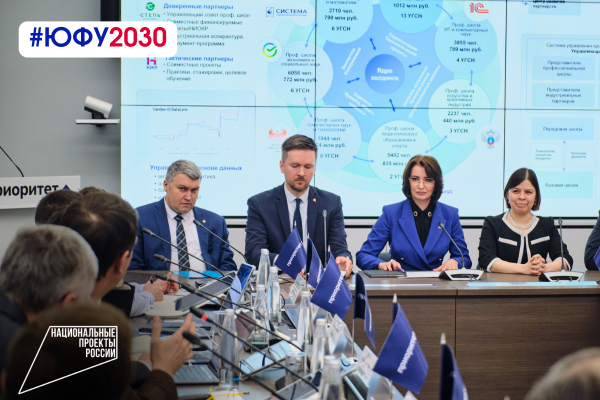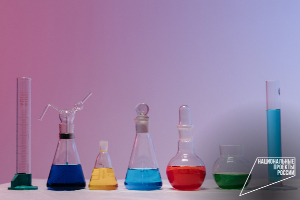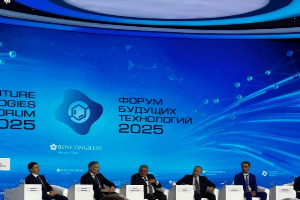
Valery Falkov, Minister of Science and Higher Education of the Russian Federation, summed up the results of the selection among the universities participating in the Priority 2030 program in 2025. According to the results of the selection, SFedU moved from the second to the first group of universities, taking eighth place in the ranking.
A distinctive feature of the current council was the new perspective of universities on their development programs – universities focused on specific projects of interaction with industry, said Valery Falkov, Head of the Ministry of Education and Science.
According to the results of the selection, the first group included 11 universities, each of which will receive about 1 billion rubles. The second group includes 21 universities, each of which will receive 460 million rubles. The third group includes 68 universities, each of which will receive up to 100 million rubles. The subsidy funds can be used to build a system of incentive payments for faculty, develop the university's infrastructure, purchase high-tech equipment, attract world-class researchers to universities, and organize scientific events.

"The transition of the Southern Federal University to the first group of the Priority 2030 program is an important step in the development of our university and confirmation of the effectiveness of the chosen strategy. The program has become for us not only a growth tool, but also an opportunity to create a unified development system that unites educational, research and innovative projects of the SFedU.
We have focused our efforts on priority areas such as the development of critical and end-to-end technologies, training personnel for national technological leadership tasks, and strengthening partnerships with the industry. Continuing to work with key partners such as the Kurchatov Institute Research Center, Rostec Group of Companies and AFK Sistema, we have increased the volume of work with Roscosmos and Rosatom, and also began to cooperate with PJSC SIBUR Holding and JSC Biocad. For today, we are seeing significant results: the volume of R&D has reached 3 billion rubles, and 12 of our scientists have entered the top 2% of the most cited researchers in the world by the end of 2024.
One of the most striking examples of our work is our cooperation with the Titan Group of Companies, in which we develop microfluidic synthesis technologies for low-tonnage chemistry. This not only speeds up production processes, but also creates the basis for new scientific breakthroughs.
In the coming years, we plan to strengthen our focus on interdisciplinary research, expand the range of unique master's degree programs, and increase our contribution to solving strategic challenges of Russia's technological leadership. I am sure that the transition to the first group of the special part of the Priority 2030 program will become a new impetus for achieving the ambitious goals that we have set for ourselves," said Inna Shevchenko, Rector of SFedU.
Key achievements:
— As part of the participation in the Priority 2030 program, the SFedU created the Center for High–Tech Instrument Engineering, the first factory in Southern Russia in the field of accelerated development of new materials for nanomedicine, low-tonnage chemistry, environmental and food safety, and deep processing of hydrocarbon raw materials. In this space, key projects for the development of high-tech technologies in the field of new materials, as well as micro-tonnage chemical production in Russia, were developed within the framework of the stratproject "Technologies for the full cycle of rapid development of functional materials under the control of artificial intelligence".
Among them, a self-managed laboratory for the rapid creation of new materials using AI technologies is the world's first system for the accelerated development of new materials in microfluidics using artificial intelligence, allowing for a seamless transfer to the production of new strategically important materials. It will bring significant advantages for Russia, as it will create a base for scaling synthesis technology from the laboratory directly into micro-tonnage production.
The system operates autonomously around the clock and provides safe conditions when working with harmful and flammable substances at a pressure of up to 100 atm, and allows not only synthesizing, but also diagnosing materials in real time. It has been expanded from 4 to 8 independent channels, which significantly improves its performance and versatility. The modular velocity variation system allows reagent flows in the range from 0.1 µl/min to 10 ml/min. Solvent consumption is reduced by 100 times or more compared to traditional synthesis methods, and the yield of the target products exceeds 90%. The reaction time is reduced by 2-10 times compared to classical reactors.
The system has been successfully tested on materials included in the list of critical industrial products of the Russian Federation, such as DABCO T-9 tin octoate, silos for fine chemistry and materials for membranes. To date, an autonomous screening of plasmonic nanoparticle synthesis parameters has been implemented with the help of a "self-managed laboratory" for use in biomedicine, for example, for the diagnosis of circulating cancer cells. Synthesis and testing of metal-organic frameworks for modification of microfluidic chips intended for artificial photosynthesis were also performed. A patent has been obtained for the invention, which confirms the uniqueness and significance of the development. Potential consumers: GC Titan, JSC Biocad, Sibur, etc.
"The special feature of SFedU is that it is the successor of scientific schools, and those that have always been at the forefront of science. Therefore, it is extremely difficult to implement technological leadership projects without the Southern Federal University. We cooperate with many universities, but it is the commitment to action and the principle of "more actions than words" that is a distinctive feature of our cooperation with SFedU," said Yulia Dyakova, Director of the Kurchatov Institute Research Center.

— Another project carried out within the framework of the stratproject "Soil Resource Management and agro-climatology" is a robotic platform for soil analysis and greenhouse gas monitoring. The platform allows sampling of soil up to 40 cm deep, in areas with rocks up to the third category of drillability. The platform is equipped with a profilograph to take into account the structural state of soils and is equipped with a universal portable sensor capable of independently detecting greenhouse gas emissions, soil humidity and temperature in the field.
The main advantages include reducing the routine workload on staff, integrating soil condition data, and being self-contained and portable. As a result, an automatic soil sampler is 30% cheaper and 50% lighter than the mass of existing analogues. The customer is FGU GCAS Agrochemcenter. At the moment, a fully functional sample has been manufactured, and the operating characteristics in real conditions have been confirmed.
— As part of this strategic project, together with the Steppe Agroholding, the Synthesis of Artificial fertile Soil using Nature—like Technologies was developed. This is the world's first technology for creating artificial fertile soil, an architectural solution based on the matrix organization of artificial soil from highly dispersed, superstable nanostructured and carbon materials, humic substances and a consortium of microorganisms.
The main advantages include increasing the area of fertile land and increasing crop yields. ASI is the partner and customer. At the moment, the project is at the stage of UGT 4-5.
— As part of the strategic project "Control Systems and Hybrid Intelligence", a biohybrid software and hardware complex for detecting vapors of target substances in ultra-low concentrations in the air has been created. The development is underway from 2023 to 2024 and has no analogues in the world. The system uses animal biosensors (rats) with implanted microelectrodes to detect vapors of target substances in the air at concentrations up to 10^-19 g/cm3. The main advantages include ensuring timely evacuation decisions and minimizing the threat of disasters. At the moment, a fully functioning prototype of the system has been developed.
"GK "Titan, together with SFedU, with the support of Priority 2030, launched projects to develop microfluidic synthesis technologies in 2024, and concrete results have already been obtained. The main effect that is important to us is a significant reduction in the development time of strategically important materials and reagents.
The SFedU Centers for Microfluidic Technologies and Low-tonnage Chemistry actually work as R&D units to solve specific tasks at the intersection of science and business. The microfluidic technologies that we are developing will allow us to replace imports with our own analogues in less than a year, in 8-10 months, and also to start producing new, improved products. This opens up opportunities for import saving and integration of universities into technological chains. For us, cooperation with SFedU is a strategic partnership that brings real results," said Alexander Orlov, head of a separate division of the Titan Group in Moscow.
Short link to this page sfedu.ru/news/77444




